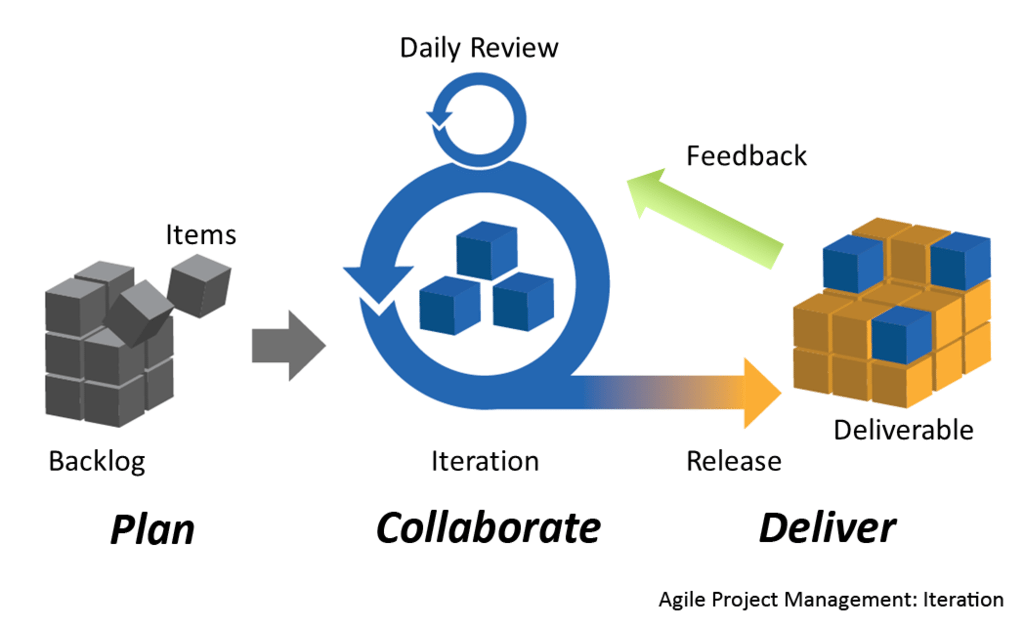The evolution of software development and its underlying theory has changed substantially from the early days. Ask any firm if they still use traditional development methods like waterfall and you might as well ask if they still operate using Windows Vista.
Agile development is a more modern approach to software development that focuses on going to market faster and more affordably. Not only does Agile offer leaner, more efficient, and faster builds to keep you competitive, much fo the industry has already adopted agile. According to one survey, 71% of software and technology based organizations have implemented agile approaches to their organization in some degree.
Agile is based on the idea of increasing team collaboration and segmenting micro tasks to allow for quicker builds. Agile requires total team commitment and can often be difficult to adapt without the right leadership. It’s more of an underlying philosophy and approach then a concrete one-two method. There are plenty of resources to learn more about agile if you’re unfamiliar, so there’s a good reason to open up Amazon on your browser!
Still not convinced of the magic behind agile, let’s look at some of the benefits.
Benefits of Agile
While waterfall followed a traditional wireframe, build, and deploy model, agile was created to ask questions and assess risk along the way. Instead of relying on theoretical use cases, agile encourages developers to create physical tests for team members to review and assess in real-time. This helps to eliminate unforeseen issues later on in the development process, manage risk, increase transparency, and reduce frustrations.

In total, with an agile approach you can save money by not making mistakes later on in the development process. This allows for safer revisions.
Most importantly though, agile increases communication across your organization. With frequent test case scenarios and quality control tests, collaboration can lead to more innovative solutions that benefit the team as a whole.
Tired of working as a solo coder or developer, waiting to crack under the pressure of creating an entire build by yourself? Well, implement agile and learn the wonders of collaboration! Here’s some ways to start today.
Ways to Implement Agile Approaches
Get Team Members on Board
The first step to implementing agile obviously entails getting team members on board. This means that managers must lead the initiative and not necessarily leave it up to CIOs and lower level staff to start adopting the attitude on their own. To help, managers can start organizing workshops, providing educational materials, or even employing a technology solutions company to implement agile solutions across their organization. Managers will act as the gatekeepers or bottleneck of agile implementation, so it’s keen that they take the initiative.
Start a Daily Standup
To start effectively using agile, create a daily standup or scrum each morning that discusses each project for the day and where team members are on projects. This is a great way to start mapping out projects, increase collaboration, assess potential pitfalls in development, and start segmenting tasks for sprints.
Work in Sprints, Not a Marathon
You need to start shifting the mindset of your organization to become goals-oriented, rather then simply working for the sake of progress. Planning out sprints, or iterative builds of projects no longer then 4 weeks in time, will have your team focused on very specific goals.
This will involve setting a work schedule and micromanaging your employees at first, but eventually they’ll learn to adapt an agile mindset. Whether you’re developing the next MS word or you’re an energy software company, so many people have benefited from the use of agile in their organization and its popularity only continues to increase.

